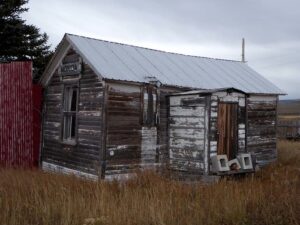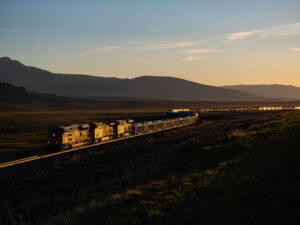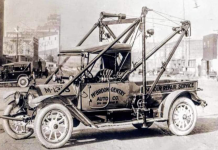March 9, 1880 The Utah Northern, later to become the Union Pacific, became the first railroad to reach Montana, entering the territory at Monida Pass.

The pass and railroad town of Monida was named by combining the names of Montana and Idaho.
The coming of the railroad was a great step forward in transportation.
Travel by foot, wagon, or horseback and the stagecoaches were primitive, uncomfortable ways of travel.
The stagecoaches were slow, hot or cold, dusty, cramped, dangerous, and expensive.
The coming of the railroad was a much-anticipated event allowing people and goods to be transported swiftly and economically.
In 1880 the terminus of the railroad was Dillon, named after Sidney Dillon president of the railroad, which in a special election in 1881 wrestled the county seat from Bannack.
Monida was once an important stop on the old Utah and Northern narrow-gauge railway which ran from Salt Lake City to Butte and Garrison. It was also a stage stop for the Monida-Yellowstone Park stagecoaches that met the trains.
In the late 19th century, stagecoaches that had ferried tourists from the railroad at Monida Pass to Yellowstone National Park were replaced when the railroad built a branch line to the park over Reas Pass.
Monida Pass, on the Continental Divide in the Bitterroot Range, marks the transition between the Beaverhead Mountains and the Centennial Mountains.

Monida Pass forms part of the border between eastern Idaho and southwestern Montana, and is between the towns of Spencer in Clark County, Idaho and Lima in Beaverhead County, Montana.
On the Idaho side is Beaver Creek running through Beaver Canyon, which was the route of the Utah and Northern Railway in 1880 and is still used by Union Pacific.
Centennial Mountains
The Centennials are home to Brower’s Spring, discovered in 1888 by Jacob V. Brower, which is believed to be the furthest point on the Missouri River. Brower published his finding in 1896 in “The Missouri: Its Utmost Source.”






